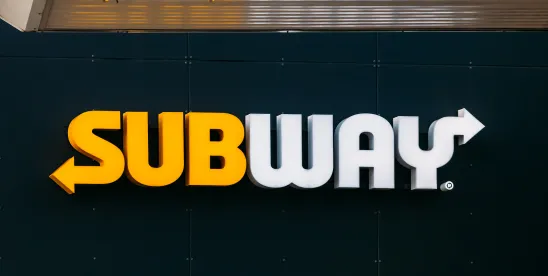While there might not be such a thing as a free lunch, Subway in 2016 texted a consumer that she could receive a free bag of chips with any purchase. The text let the consumer know she could respond STOP to opt out of the texts, which she did. Despite Subway responding that the consumer had been unsubscribed, several days later Subway texted the consumer again with a link to another promotional offer. The consumer sued on behalf of a putative class for alleged violations of the federal Telephone Consumer Protection Act. The district court dismissed the complaint and, last week, the Second Circuit affirmed the dismissal. Soliman v. Subway Franchisee Advertising Fund Trust, LTD., No. 22-1726 (2d Cir. May 10, 2024).
The TCPA makes it unlawful “to make any call (other than a call made for emergency purposes or made with the prior express consent of the called party) using any automatic telephone dialing system or an artificial or prerecorded voice . . . to any telephone number assigned to a . . . cellular telephone service.” 47 U.S.C. § 227 (b)(1)(A)(iii) (emphases added). But as both the district court and now the Second Circuit found, the putative class action complaint failed to plausibly allege that Subway sent the text messages either (1) using an automatic telephone dialing system (“ATDS”), or (2) using an artificial or prerecorded voice, so the text messages did not fall within the TCPA’s ambit.
On the first point, it was undisputed that Subway did not randomly generate telephone numbers. Instead, it stored a pre-existing list of telephone numbers that were then texted based on randomly generated indexing or coding numbers. In other words, the list of telephone numbers was not randomly generated; it was the selection of which stored telephone numbers to text that was random.
The plaintiff argued that the TCPA’s definition of an ATDS includes numbers randomly drawn from a pre-existing list of numbers, but the Second Circuit disagreed. The TCPA provides that an “automatic telephone dialing system . . . has the capacity . . . (A) to store or produce telephone numbers to be called, using a random or sequential number generator; and (B) to dial such numbers.” 47 U.S.C. § 227(a)(1). The Second Circuit easily concluded that the first and third references to “numbers” in this section clearly referred to telephone numbers. While it was less obvious what “number generator” referred to, the Court found that “it would be incongruous for ‘numbers’ to refer to telephone numbers in the first and third mention in the statute, but not the second.” This interpretation also was consistent with the TCPA as a whole, which uses “number” and “telephone number” interchangeably in other sections. Accordingly, Subway’s use of a random number generator to dial pre-stored numbers did not meet the TCPA’s definition of an ATDS.
On the second point, the district court held that a text message is not an artificial or prerecorded “voice,” and the Second Circuit affirmed this holding on appeal too. When the TCPA was enacted, voice was defined as a “sound produced by vertebrates by means of lungs, larynx or syrinx, and various buccal structures.” Further, the TCPA itself reflected that “voice” meant something audible because the statute defines “caller identification information” as information “regarding the telephone number of, or other information regarding the origination of, a call made using a voice service or a text message sent using a text messaging service.” 47 U.S.C. § 227(e)(8)(A) (emphasis added).
Under Soliman, technologies like Subway’s are not subject to the TCPA’s provisions relating to the use of an ATDS or artificial or prerecorded voice. This is a significant victory for companies facing TCPA suits, particularly in the Second Circuit.



 />i
/>i

